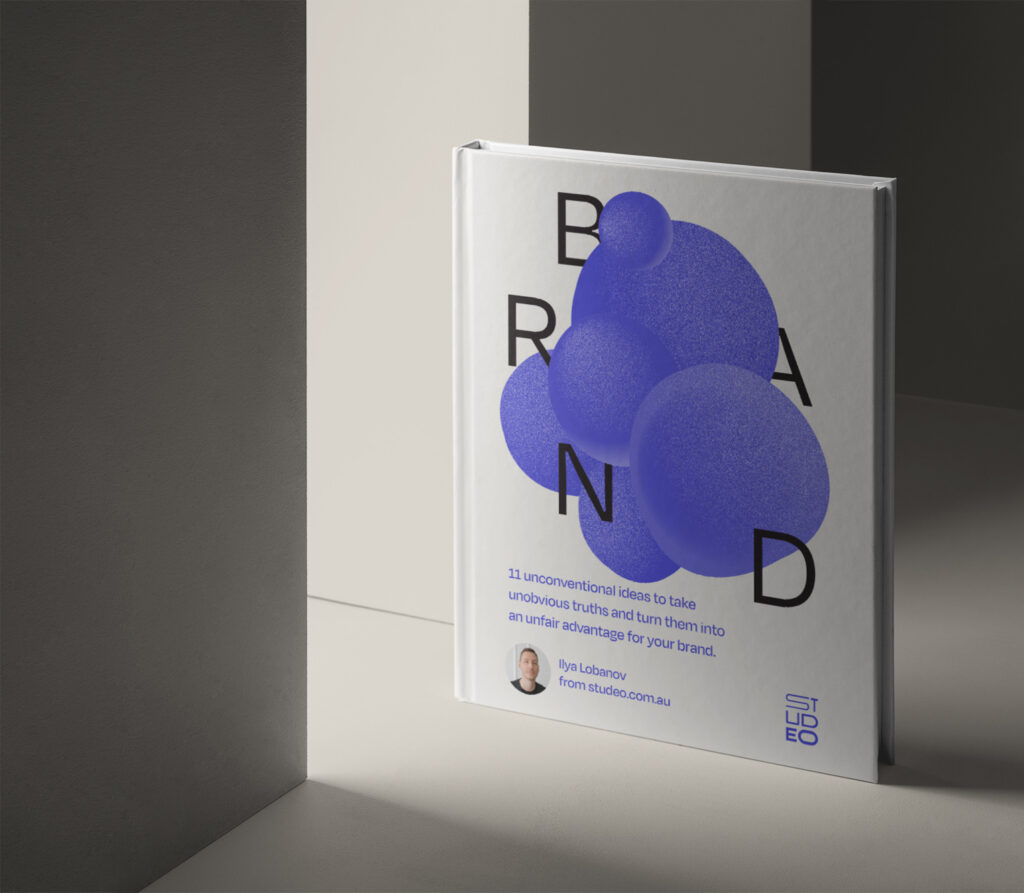Brand Personality: How to Connect to Customers In a Sea of Sameness

Take a moment to imagine some products for a specific category. Let’s say men’s deodorants. What types of brands come to mind first?
Perhaps it’s Gillette, or maybe Lynx (Axe in the USA) or Old Spice.
Why might we remember these brands more than others?
And more importantly, why do we tend to gravitate towards them when standing in the aisle of a shop (because the probability is we are choosing those products when buying too)?
Everything with branding is contextual and is many layers deep. However, at least one major factor that probably drives you and me to remember and choose those brands is the brand personality for each.
Whether we’re aware of it or not, we have a connection to the character of those brands.
If you’re a brand builder or business owner, I invite you to examine these brand personalities with me. And how they can be used to stand out in a sea of sameness.
Why do we choose certain brands over others?
Out of the three men’s deodorant examples, Gillette probably has the least remarkable brand personality (at least on the surface).
It has a high brand salience, a long presence in the market, and a high market share in adjacent categories. And therefore, through that long-term exposure, the brand has built strong links within your memory, along with associations to certain products.
But you also likely gravitate towards Gillette because the company feels stable, promises certain excellence, and makes you feel in control. These gut-level responses to Gillette are triggered by their Ruler Archetype. One of 12 timeless and commonly recognised archetypes we all intrinsically understand.
Whereas Gillette’s personality quietly bubbles away somewhere below the surface, Lynx and Old Spice seemingly turn theirs up to eleven.
Lynx uses their memorable marketing campaigns and adverts that promise transformation and a little magic, by leaning into the Magician Archetype.
And Old Spice communicates their Jester Archetype by reminding us to have a good time, and not take life too seriously. With every Archetype-led brand, the chosen personality permeates through whatever they do. Old Spice even has whacky deodorant names (Swagger, NightPanther, and Wolfthorn) to align with their defined personality.
Today, brands act more and more like humans, communicating certain values and personality traits. Whereas in the past, humans could only connect to other humans. (Okay, maybe also to other members of our tribes like pets, on some level).
That has changed with the evolution of brands (and significantly impacted how businesses show up in the world).
Evolution of corporations into brands.
Before we dive into some brand personality frameworks, I’d like to invite you into my time machine and travel back in time.
To a time when we discussed where the word brand originated from. Originally it meant ‘to burn’, as translated from Old Norse. To ‘brand’ meant to ‘mark‘ livestock with a unique symbol to communicate ownership and origin.
Erik (or Bjørn or Frode) the cattle/business owner was essentially the business. And his brand was the symbol he used to mark his product. If he exchanged cattle for some other products or services but couldn’t deliver on his side of the deal, the other party could probably take his other possessions, his house, maybe his land. He was personally liable.
That all changed with the creation of something called a limited liability corporation. What’s known as a legal fiction, it’s an entity that can act as if it were a person – take out insurance, buy and sell products and much more.
If Erik’s fictitious (but very real in a legal sense) entity – his company – goes bankrupt, Erik can usually still keep his personal assets.
Over time, somewhere along the lines, language and definitions began to merge and change. Although there are distinctions between a limited liability corporation and a brand, from my observations, many consumers started to associate the word brand with these fictitious entities. And since these could seemingly act the same way that a human would (whilst remaining imaginary), we needed to assign some human characteristics to them for it all to make sense in our fragile minds.
And we can now use a Brand Personality framework to determine what characteristics and traits our brands should have.
Choosing a Brand Personality wisely
There are at least two prominent frameworks to establish a Brand Personality.
The first model was developed by Jennifer Aaker. Not dissimilar to the Big-5 human personality scale, Jennifer has put forward that brands tend to fall somewhere on the scale of 5 Brand Personality Dimensions.
Sincerity, excitement, competence, sophistication, and ruggedness.
For instance, you would not be surprised that Red Bull is a great example of a brand that falls within the ‘excitement’ dimension. A brand that is perceived as being imaginative, inspiring, and edgy.
Another prominent framework can be referred to as the Jungian Archetypes. A set of universally understood characters that carry with them inherent values, symbols, and meaning on an innate level, as popularised by Carl Jung, a Swiss psychiatrist.
If I mention Hero, Outlaw, or Magician, for example, we can all picture what type of values, character traits, and motivations each might represent. There are 12 commonly understood archetypes in total. Typically represented visually as a wheel that’s split pizza-style into 12 slices.
While each of the 12 archetypes represents a key human desire or motivation, they are also segmented into 4 quadrants. Stability, Freedom, Mastery, and Belonging.
With the human personality frameworks for example, like the Big-5 or the Myers–Briggs Type Indicator, we often have some ‘dominant’ traits and drivers. But we also tend to exhibit less dominant characteristics (for example very few people are truly extroverted or introverted, with most falling slightly off to the center to either side).
Similarly, brands can associate themselves with a combination of archetypes or dimensions, but for the most effective implementation of a personality, they tend to lean more into one key character or dimension.
Leveraging a Brand Personality for your business.
As I mentioned, a Brand Personality tool (whichever one you choose) is one of many available to brand builders. But they are some of the most effective to create a coherent brand identity.
Why?
Because with a focused brand personality a brand can establish a clear voice, consistent messaging style, and a set of distinctive brand assets (logo, supporting graphics, sonic logo).
Intentionally bringing a specific personality to life, a brand can become the obvious choice for their ideal clients by cutting through all the clutter, sameness, and noise of their market category.
As humans, we crave connection. We also crave to establish a unique identity. And we place ourselves in those types of environments and surround ourselves with anything that can further reinforce that identity for us.
Because certain brands are intentional with aligning to a specific brand personality, we can connect to them on an intrinsic level (just like we connect with similar-minded humans). And we bring those brands into our world (by purchasing their products and services) to reinforce our own identity.
Will you take advantage of Brand Personalities in your own branding efforts?
How can you discover your Brand Personality?
As I mentioned, honing in on your core Brand Personality can help you to establish a consistent brand tone of voice. This is critical to attracting (and keeping) your ideal customers. People who resonate with your brand tone of voice and those who are ‘picking up what you’re putting down’ will generally be the ones who rave about you to others (not a bad by-product, huh?).
As a general rule of thumb, once you know how you want to show up for your customers through your brand personality, tone of voice, and messaging is to make sure you communicate that way consistently.
Pivoting over time for strategic reasons is okay, but make sure it feels like an organic evolution rather than a sporadic personality swap.
So the big question is, how do you know how to show up? What Brand Personality is right for your business?
Often the founders’ unique personalities (or the individual personality of one founder) can help to inform the personality of the brand as well. But in addition to that, you can picture your business as if it were a person. Give it a human name. Imagine it in various real-life scenarios. How would they talk, what causes would they care about, what kind of people (and brands) would they want to surround themselves with?
Answering some of these questions can also help:
- Hand-to-heart, do you feel that your product or service is innovative in terms of what it’s bringing to the market and customers, or is it more about providing a reliable outcome?
- Which would your customers value more: an honest, down-to-earth approach or a sense of exclusivity and glamour?
- If your product or service was to shine a light on some glaring gaps or inadequacies of your industry, would your customers resonate more with some humour or a call-to-arms?
- Which does your business value more: learning from mistakes and overcoming challenges in continuously new ways or reliable expertise, quality and confidence?
- How do you not want your brand to be perceived (how not to show up can help you establish how you should): uptight, domineering, experimental, goofy, fake, daring?
Now over to you
If you enjoyed reading this article, consider signing up for the Studeo Insider, and receive more insights like this one. If you know someone who might enjoy this article, please share it. If you have any questions or would like a chat, please reach out via email or on Instagram, I’d love to hear from you!
